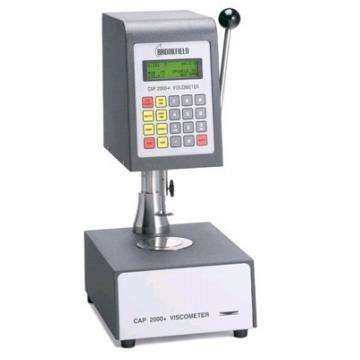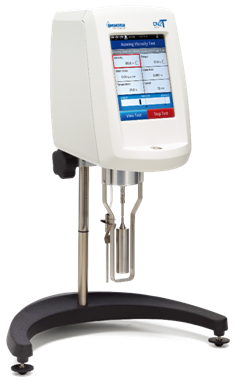Principle of Viscometer - Introduction
A viscometer is a physical analysis instrument used to measure the viscosity of a fluid. In industrial production and scientific research, the composition or quality of a substance is often monitored by measuring viscosity. The measurement of viscosity is closely related to the fields of petroleum, chemical, electric power, metallurgy and national defense. It is an important means of industrial process control, improving product quality, saving and developing energy. In the fields of physical chemistry, fluid mechanics, etc., viscosity measurement plays an important role in understanding fluid properties and studying flow conditions.
Viscometer classification
The viscometer is divided into three types according to the working mode: capillary type, rotary type and vibrating type viscometer.
Capillary viscometers are typically Saybolt viscometers and are a common viscometer. The working principle is as follows: the sample container (including the outflow capillary) is filled with the sample to be tested, and is in a constant temperature bath, and the height of the liquid column is h. The cock is opened and the sample begins to flow to the receiver while calculating the time until the sample level reaches the scale line. The greater the viscosity of the sample, the longer this period of time. Therefore, this time directly reflects the viscosity of the sample.

A common rotary viscometer is a cone and plate viscometer. It mainly consists of a flat plate and a cone plate. The motor drives the flat plate to rotate at a constant speed through the shifting gear. The capillary is pressed to keep the sample to be tested between the two plates, and the cone plate rotates by the friction between the molecules of the sample. Under the action of the torsion spring in the torque detector, the cone plate does not rotate after being rotated by a certain angle. At this time, the torque applied by the torsion spring is related to the internal frictional force (ie, viscosity) of the sample to be tested: the greater the viscosity of the sample, the greater the torque. A torque capacitor is provided in the torque detector, and the moving piece rotates with the cone plate to change its own capacitance value. The torsion spring torque reflected by this change in capacitance is the viscosity of the sample to be tested and is displayed by the meter.
Vibrating Viscometer: This viscometer works by the fact that an object in a fluid is subject to fluid obstruction when it vibrates. The magnitude of this effect is related to the viscosity of the fluid. A commonly used vibrating viscometer has an ultrasonic viscometer with a shrapnel inside the detector. When excited by a pulsed current, the shrapnel produces mechanical vibrations in the ultrasonic range. When the shrapnel is immersed in the sample to be tested, the amplitude of the shrapnel is related to the viscosity and density of the sample. In the case of a known density, the viscosity value can be determined from the measured amplitude data.

Correct use of the viscometer
1. The machine must be in a horizontal state.
2. Avoid avoiding air bubbles when the rotor is placed in the sample. Otherwise, the measured viscosity value will be reduced. The method to avoid is to put the rotor into the sample and then install the rotor. The rotor cannot touch the cup wall and the bottom of the cup. The sample being measured must have not passed the specified scale.
3. When measuring different samples, the rotor must be kept clean and dry. If there are other samples remaining in the rotor or residual water after cleaning, the accuracy of the measurement will be affected.
4. The maximum acidity (PH) should not exceed 2. If the acidity is too large, special rotor should be used. When using ULA, the sample volume should be determined (only 16ml).
5. Select the viscosity standard solution according to the measured viscosity range, and verify the instrument before each use of the viscometer or rheometer, or periodically check to ensure the accuracy of the measurement. It can provide Newtonian fluid in each viscosity range. The standard silicone oil or oil standard, accuracy ± 1%, the recommended life of the viscosity standard is one year from the opening.
6. When connecting the rotor, gently lift and hold the mandrel (on the main unit) with your left hand, and rotate the rotor with your right hand. This operation is to protect the mandrel and the spring wire in the fuselage, which can extend the service life of the instrument. When the value is relatively stable, otherwise the value obtained will have a large error. 8. When selecting the rotor, it depends on the viscosity of the sample to be measured and the measurement range of the rotor is the closest.
Tetramisole Hcl,Albendazole Bolus,Multivitamin Premix,Diminazene Diaceturate
NINGBO VOICE BIOCHEMIC CO. LTD , https://www.medicine-voice.com